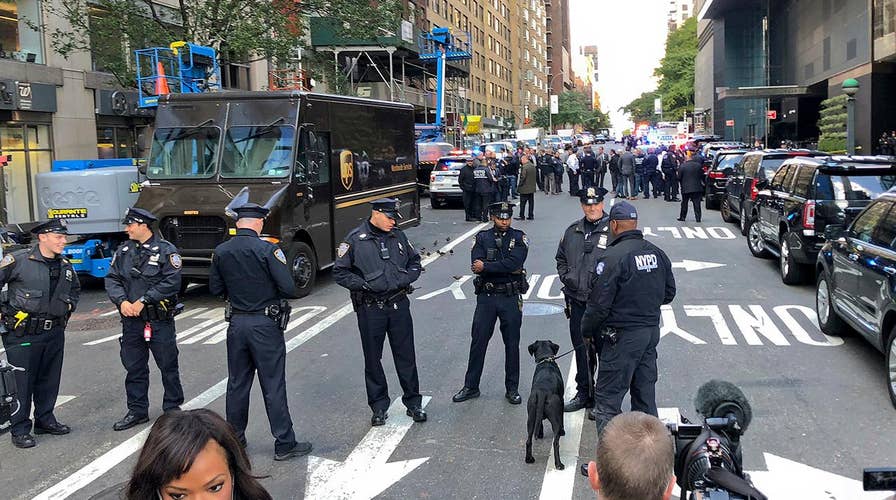Suspicious devices sent to prominent political figures
Law enforcement officials say the incidents appear related and the devices appear to be pipe bombs; reaction and analysis on 'The Five.'
At least seven suspicious packages sent to CNN and prominent political figures — such as former President Barack Obama and former Secretary of State Hillary Clinton — which were intercepted this week had something in common, the FBI confirmed. They all had printed address labels and six stamps, while the return address on each spelled Florida Rep. Debbie Wasserman Schultz’s name incorrectly.
POLITICIANS REACT TO SUSPICIOUS PACKAGES SENT TO OBAMA, CLINTON, CNN
Why do these consistencies matter? They were common indications the package was suspicious, according to at least two government agencies.
In light of the recent investigations, here’s how to tell if you’ve received a suspicious package.
What is a suspicious package?
A suspicious package can take on a variety of forms, such as a letter, package, or unattended backpack, according to Ready Navy, the U.S Navy's Emergency Preparedness Program.
Suspicious packages can include life-threatening chemical, biological or radiological hazards, according to the program, which noted some may also include an improvised explosive device, also known as an IED.
How to determine if a package is suspicious
Excessive postage, no return address and “unusual addressing” are just a few signs a package may be suspicious, according to the National Protection and Programs Directorate, which is a part of the U.S. Department of Homeland Security.
“Unusual addressing” could mean the package does not have a return address, or “may be postmarked from a city that does not match the return address,” the Center for Disease Control and Prevention (CDC) said.
Labeling with misspelled words, or with “restrictive markings” — such as “personal” or “do not x-ray” — are also signs a package is likely a suspicious one, according to the National Protection and Programs Directorate.
The CDC also reported suspicious packages “are often addressed by hand in all capital letters” or wrapped with excessive tape or string.
Other signs
A suspicious package may produce an odor or contain a “powdery substance” that’s either “felt through or appearing on the item,” the National Protection and Programs Directorate states.
Oily stains and discoloration are additional signs as well, while a lopsided or “bulky” package could also be an indication of a suspicious package, according to the government agency, which added “ticking sounds, protruding wires or exposed aluminum foil” are also signs.
What to do if you find a suspicious package
The best thing to do after receiving a suspicious package is to remain calm, both the CDC and the National Protection and Programs Directorate say.
TRUMP: 'WE HAVE TO UNIFY' AFTER SUSPECTED EXPLOSIVE DEVICES SENT TO DEMOCRATIC POLITICIANS, CNN
The National Protection and Programs Directorate says to call the Federal Protective Service at 1-877-437-7411 “immediately,” while the CDC said to use a landline phone to call 911, as a “cell phone or device that sends a signal could trigger an explosive device.”
Additional tips, as recommended by the National Protection and Programs Directorate, include:
- Do not open the letter or package, or open it any further
- Do not shake the letter, package or parcel or empty what’s inside
- If possible, carefully cover the suspicious item with clothing, a towel or a trash can
- Shut off any fans which may “circulate the material” inside the package
- Isolate the package and leave the area where it has been sectioned off
- Wash your hands with soap and water if you come into contact with a suspicious package
The Associated Press contributed to this report.


